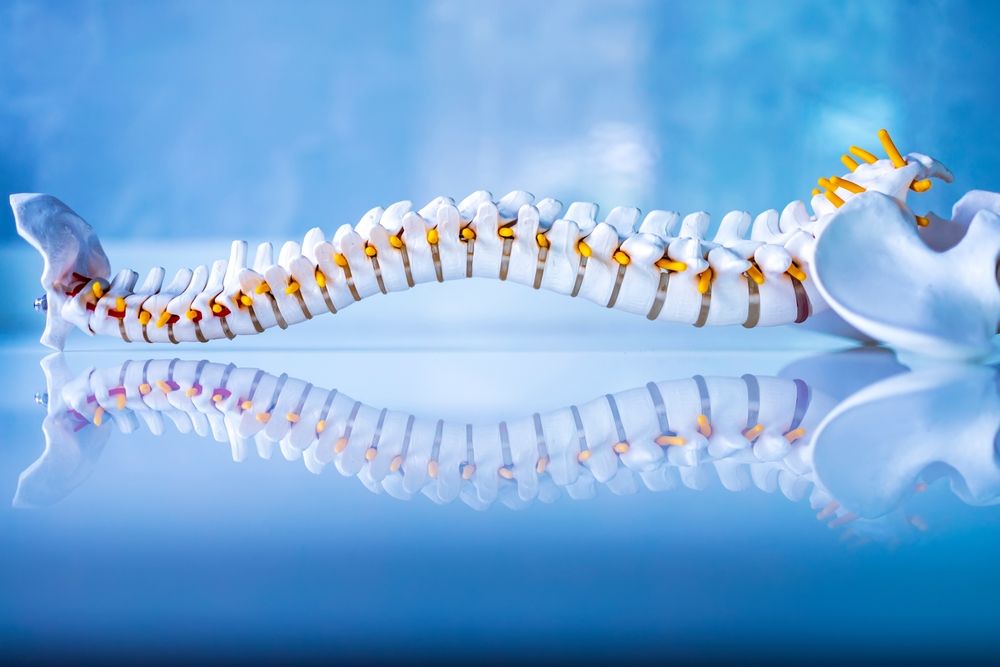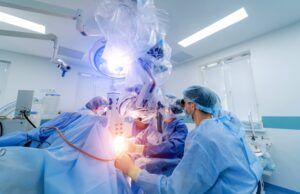At Spine, Neck, & Back Specialists, led by Dr. Jay Reidler, we understand how debilitating spine issues can be. Whether it’s chronic back pain, a herniated disc, or degenerative conditions, finding effective treatment is essential. Minimally invasive spine surgery (MISS) is an innovative approach to spine surgery that focuses on reducing patient discomfort, minimizing risks, and most importantly, speeding up recovery times.
Serving patients in Bloomfield, Englewood, and Union City, NJ, we offer this cutting-edge treatment to help you get back to your normal activities faster. If you’ve been considering surgery for your spine condition, it’s essential to understand how minimally invasive procedures can accelerate your recovery.
What Is Minimally Invasive Spine Surgery?
Minimally invasive spine surgery is a technique that uses smaller incisions and specialized instruments to treat spine-related conditions. Compared to traditional open spine surgery, which often requires large cuts and muscle disruption, minimally invasive procedures aim to reduce trauma to the body while still providing effective solutions for various spinal issues.
Dr. Jay Reidler utilizes the latest technology and tools, such as robotic assistance, to perform minimally invasive procedures. These advancements allow him to access the spine more precisely, using small incisions, which leads to less pain, less scarring, and faster recovery.
How Minimally Invasive Spine Surgery Works
Unlike traditional spine surgery, which may require long incisions and extensive muscle dissection, minimally invasive procedures use tiny incisions, often less than an inch in size. During the surgery, the surgeon uses specialized instruments, such as cameras, to view the spine on a monitor and guide the instruments into the exact location. These instruments help with tasks like removing herniated discs, decompressing nerves, or stabilizing the spine with less impact on surrounding tissues.
Dr. Reidler employs the most advanced techniques and tools, including computer-assisted navigation, fluoroscopy (live X-rays), and sometimes robotic assistance. This allows him to target the issue with incredible precision, ensuring minimal disruption to muscles and nerves.
Benefits of Minimally Invasive Spine Surgery
Minimally invasive spine surgery offers numerous benefits over traditional surgery. Here are the key advantages:
- Smaller Incisions: With smaller incisions, there’s less trauma to surrounding tissues. This reduces the chances of complications such as infections and bleeding.
- Less Muscle Disruption: Traditional spine surgeries may require the surgeon to cut through muscles and other soft tissues to reach the spine. In contrast, minimally invasive surgery minimizes muscle disruption, which is one of the primary factors contributing to pain after surgery.
- Faster Recovery Times: One of the most significant benefits of minimally invasive surgery is the speed at which patients recover. Smaller incisions, less muscle disruption, and reduced pain all contribute to faster healing and quicker return to daily activities.
- Reduced Pain and Discomfort: Since the incisions are smaller and less tissue is disturbed, patients experience less postoperative pain, often requiring fewer pain medications.
- Shorter Hospital Stays: Because of the reduced trauma to the body, many minimally invasive spine surgery patients can go home the same day or after a short overnight stay in the hospital, depending on the complexity of the surgery.
- Lower Risk of Complications: With fewer incisions and less muscle disruption, there is less risk of complications like infection, nerve damage, or blood loss.
Common Spine Conditions Treated with Minimally Invasive Surgery
Minimally invasive spine surgery can treat a wide range of spine conditions. Some of the most common conditions that Dr. Reidler addresses through MISS include:
- Herniated Discs: When the soft center of a spinal disc protrudes and presses on nearby nerves, it can cause pain, numbness, or weakness. MISS procedures such as microdiscectomy remove the portion of the disc that is causing nerve compression, alleviating pain.
- Spinal Stenosis: This condition involves narrowing of the spinal canal, which can put pressure on the spinal cord and nerves. Decompression surgery, a type of minimally invasive procedure, can remove the tissue or bone that’s causing the narrowing, easing pressure and improving mobility.
- Degenerative Disc Disease: As we age, the discs in our spine can lose hydration and elasticity, causing pain and stiffness. In cases where non-surgical treatments don’t work, minimally invasive spinal fusion or artificial disc replacement can be performed to stabilize the spine.
- Spondylolisthesis: This occurs when one vertebra slips over the one below it, which can lead to pain and nerve compression. Minimally invasive spinal fusion surgery helps stabilize the vertebrae and alleviates symptoms.
- Spinal Fractures: Whether caused by trauma or osteoporosis, spinal fractures can be treated with minimally invasive techniques like kyphoplasty or vertebroplasty to stabilize the spine and reduce pain.
Speeding Up Recovery with Minimally Invasive Spine Surgery
Minimally invasive spine surgery is well-known for its ability to speed up recovery compared to traditional procedures. Here’s how it works:
1. Less Postoperative Pain
After traditional spine surgery, patients often experience significant pain due to the large incisions and muscle dissection required. In contrast, minimally invasive techniques cause far less trauma to the body, resulting in reduced pain following the procedure. This means you will likely need fewer pain medications, which can help avoid the side effects often associated with prescription painkillers.
2. Faster Wound Healing
The smaller incisions used in minimally invasive surgery heal more quickly, reducing the overall time you spend recovering from the procedure. Smaller incisions also mean less scarring, which improves both the cosmetic outcome and recovery experience.
3. Reduced Muscle and Tissue Trauma
Minimally invasive procedures avoid disrupting muscles and soft tissues, which is one of the primary causes of post-surgical pain. With less tissue disruption, your body is able to heal more quickly and return to normal function faster.
4. Shorter Hospital Stays
Due to the reduced trauma involved in minimally invasive surgery, many patients are able to return home the same day or after just a brief hospital stay. In contrast, traditional spine surgeries often require several days of recovery in the hospital.
5. Quick Return to Daily Activities
Patients who undergo minimally invasive spine surgery can typically resume their daily activities much sooner than those who undergo traditional spine surgery. While heavy lifting and strenuous exercise should be avoided for a few weeks, most patients can return to work and normal routines relatively quickly.
6. Rehabilitation and Physical Therapy
While the recovery process is faster with minimally invasive surgery, it’s still essential to follow a rehabilitation program to ensure the best outcomes. Physical therapy can help strengthen the muscles around your spine, improve flexibility, and speed up recovery.
What to Expect After Minimally Invasive Spine Surgery
Your recovery will vary depending on the type of surgery performed and your overall health, but here’s what most patients experience:
- Day of Surgery: After surgery, you will be monitored closely to ensure there are no immediate complications. Most patients are able to go home within a few hours or the day after surgery.
- Postoperative Pain: Expect some mild discomfort during the first few days after surgery, but this will typically be much less than what you’d experience after traditional surgery. Dr. Reidler will work with you to manage any pain with medication.
- Follow-up Appointments: You will have follow-up appointments with Dr. Reidler to monitor your progress and ensure the surgical site is healing properly. During these visits, any concerns or questions you have will be addressed.
- Physical Therapy: As part of your recovery, Dr. Reidler may recommend physical therapy to strengthen your muscles, improve flexibility, and speed up recovery. Following the prescribed rehabilitation program is crucial for optimal results.
- Return to Normal Activities: Most patients can return to light activities within a week or two, but it’s important to avoid heavy lifting or strenuous exercise for several weeks. Dr. Reidler will provide specific guidelines based on your unique surgery.
The Advantage of Choosing Spine, Neck, & Back Specialists
At Spine, Neck, & Back Specialists, we are proud to offer minimally invasive spine surgery to our patients in Bloomfield, Englewood, and Union City, NJ. Dr. Jay Reidler combines his expertise with the latest technologies to provide safe, effective treatments for spine conditions, ensuring faster recovery times and better outcomes.
If you’re struggling with a spine issue and want to explore your options, we are now accepting CIGNA PPO and many other insurance plans. Contact us today to schedule a consultation and learn how minimally invasive spine surgery can help you recover more quickly and get back to doing what you love.
Sources:
- McGinnis, R. S., & Patel, V. (2017). “Minimally Invasive Spine Surgery: A Review.” Journal of Orthopedic Surgery, 18(6), 555-563.
- Gelfand, M. (2019). “Advancements in Minimally Invasive Spine Surgery.” Spine Journal, 44(12), 1620-1628.
- Orozco, D., & Muratore, R. (2018). “Minimally Invasive Surgery for Spine Disorders.” Journal of Neurosurgery: Spine, 28(3), 335-342.




